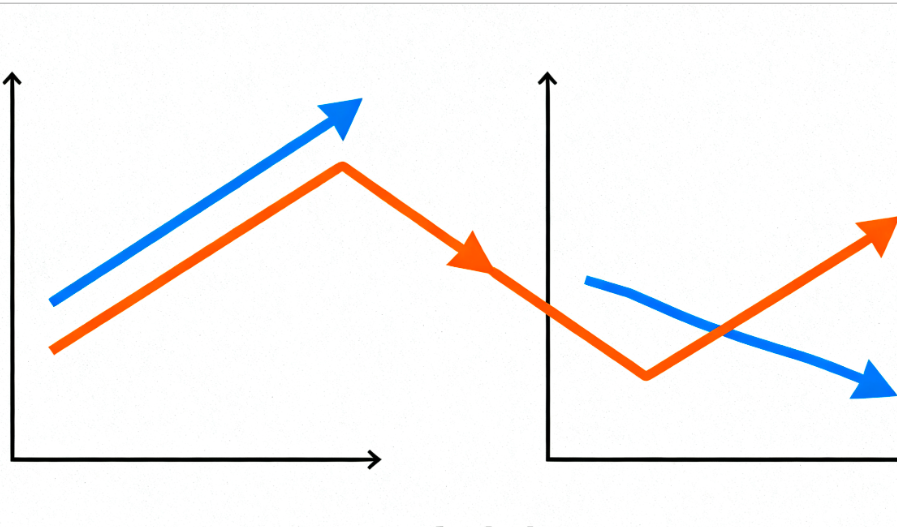
On October 22, 2025, the Kadena team announced that due to unfavorable market conditions, it would immediately cease all business operations and active maintenance. The team expressed gratitude to all supporters and regret that it could no longer promote this unique decentralized project. Kadena's native token KDA fell over 60% that day.
What was the Kadena project? Why did it suddenly announce the cessation of operations? What are the implications for the industry?
I. The Star from the "JPMorgan Chase Faction" — Kadena
Kadena was founded in 2016, with its mainnet launching in October 2019. It was established by Wall Street veterans Stuart Popejoy and Will Martino. The former was the head of JPMorgan Chase's blockchain development team in New York, and the latter had worked at the U.S. Securities and Exchange Commission and was fully dedicated to the Kadena project. They had previously co-developed JPMorgan's private chain system, JPMorgan Kinexys, before starting Kadena, aiming to create a blockchain with both high performance and decentralized security. Thus, Kadena could be called a star project from the "JPMorgan Chase faction" at the time.
Kadena adopted the Chainweb architecture — multiple parallel chains working together to process transactions, achieving high throughput and low congestion. It also introduced its self-developed smart contract language, Pact, emphasizing a design philosophy of "secure, auditable, human-readable" smart contracts. Kadena offered a hybrid blockchain architecture, including public chain and private chain solutions. The public chain is a decentralized blockchain network suitable for a wide range of public and commercial applications; the private chain solution provides enterprises with a secure, controllable blockchain environment suitable for handling sensitive data and internal business processes. Kadena's original design intention was to serve as a bridge between enterprises and public chains.
KDA is the native cryptocurrency of the Kadena blockchain, used to pay for transaction fees, incentivize miners, and participate in platform governance. The initial distribution of KDA tokens was: 70% to miners, 20% for platform reserves, 6% to developers, 3% to contributors, and 1% burned.
In November 2021, KDA had its moment of glory, surging to nearly $25, before falling back below $5.
Affected by the news of Kadena ceasing operations, the price of KDA plummeted, dropping over 60% in 24 hours to $0.06187 at the time of writing.
II. Why Did Kadena Cease Operations?
Kadena posted a tweet on X explaining the reason for discontinuing operations — market conditions.
"We regret to announce that the Kadena organization will be unable to continue operations and will immediately cease all business activities and maintenance of the Kadena blockchain.
We sincerely thank everyone who has journeyed with us. Due to market conditions, we are unable to continue promoting and supporting the adoption of this unique decentralized product, for which we deeply regret.
We have notified all employees that we will cease operations. We have retained a small team to handle this transition and wind-down period. For any questions or concerns, please contact operations@kadena.io.
The Kadena blockchain is not owned or operated by a company. As a fully decentralized, Proof-of-Work-based smart contract blockchain, the network is operated by independent miners, and the on-chain smart contracts and protocols are independently managed by their maintainers.
To ensure operational continuity, we will soon provide a new binary to ensure uninterrupted operation without our involvement and encourage all node operators to upgrade as soon as possible.
As for the KDA token and protocol, it will continue to run even in our absence. As stated in our latest token economics update (https:/medium.com/kadena-io/clarification-to-the-2021-token-economics-update-c3502aa50fa1), over 566 million KDA will be issued as mining rewards until 2139; and the 83.7 million KDA issued by the platform will be unlocked in November 2029. We are prepared to collaborate with the Kadena community to explore how to assist with the transition of community governance and maintenance. We will provide timely updates.
We extend our heartfelt thanks to all team members, community members, and partners who have shared this journey with us. We wish everyone the best in the future."
According to Cbin Sights data, the total fundraising for the Kadena project was nearly $15 million.
This amount is not prominent in the public chain arena. Apart from the early project Ethereum, projects like Solana, Avalanche, Near, Aptos, and Sui have all raised over $300 million.
Combined with the aforementioned KDA price remaining below $5 for an extended period after April 2022, and even hovering below $1 for a long time after April 2023, the very bleak "market conditions" are indeed the main reason for Kadena's decision to vanish.
III. Kadena's Bad Debts
As early as January this year, Kadena had announced a strategic partnership with Ownera: Through this collaboration, Kadena would use its high-performance blockchain technology to support Ownera's IOWN Tokenization Platform, aiming to provide global enterprises with secure and efficient digital asset issuance and management solutions. On July 18, Binance also announced that it would support the Kadena (KDA) network upgrade and hard fork.
Just three months later, Kadena chose to withdraw from the public chain arena, leaving behind a mess.
Not to mention the distant dream of 2139, users won't even get to see the unlock of 83.7 million KDA in 2029. According to Kadena's announcement, "over 566 million KDA will be issued as mining rewards until 2139; and the 83.7 million KDA issued by the platform will be unlocked in November 2029." The Kadena public chain "failed before its mission was accomplished," leaving early investors and long-term holders facing significant asset depreciation.
Furthermore, the announcement states that "the network is operated by independent miners," meaning miners are core participants in the Kadena network. After the news of Kadena abandoning operations, miners are also likely to exit mining due to the sharp drop in token price and lack of official technical support. This will lead to a decrease in network hash rate, further exacerbating network security risks and transaction delays. Although the official stated: "To ensure operational continuity, we will soon provide a new binary to ensure uninterrupted operation without our involvement and encourage all node operators to upgrade as soon as possible," so far, Kadena has not presented a convincing solution.
Finally, although Kadena stated it would "collaborate with the Kadena community to explore how to assist with the transition of community governance and maintenance," if major technical vulnerabilities arise in the network later, can the community truly shoulder the responsibility? Moreover, the Kadena ecosystem was not particularly robust to begin with. Without the push from official resources, market confidence will be even lower, and there might not be any new capital, technical participants, or ordinary users paying attention to the project. Ultimately, Kadena will likely meet the fate of becoming a "zombie network."
IV. Reflections for the Industry
-
Real-World Applications and Genuine Users Are What Truly Matter
Even with its impressive "JPMorgan Chase faction" background and having launched Kaddex, and envisioning scenarios like "asset tokenization, bond issuance, real estate, artwork" on its official website, Kadena consistently lacked real-world applications that could attract a large user base. Consequently, its ecosystem remained desolate, and the token price kept falling. In contrast, public chains like Ethereum and Solana either have strong developer communities and DApps or have created high-quality user experiences with "high performance" and "low cost." Therefore, the public chain track requires not just technology and background but also genuine user numbers and practical, real-world applications to support the ecosystem. Without applications and users, there is no dream. -
Both Financial Reserves and Operations Are Indispensable
Kadena raised only $15 million. Compared to the numerous public chains mentioned above, which often raised over $300 million, its risk resistance capability couldn't match its public chain rivals. Through the ups and downs of the cryptocurrency market cycle, insufficient financial reserves cannot guarantee a team's continuous operation. Moreover, compared to other public chains with higher visibility, Kadena was rarely heard from. With its operational situation also being sluggish, the project's collapse seemed almost inevitable. -
The Basic Structure of the Blockchain Industry Is Already Formed
As the crypto industry gradually matures, the basic structure of various major tracks has initially taken shape. In the public chain track, giants like Ethereum and Solana have already captured most of the users and can basically meet industry demands. It is difficult for other latecomers to establish their own user base and achieve profitability.
Conclusion
The end of the Kadena project is not entirely lamentable. This case also reflects the broader trend of the blockchain industry shedding bubbles and returning to its essence. In the era of the "public chain wars," countless public chains rose only to quietly fade away. But ultimately, the industry itself is moving towards greater maturity in a more rational and pragmatic direction.
















